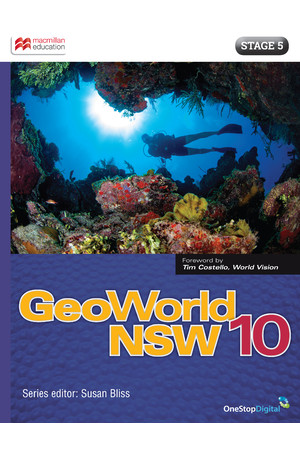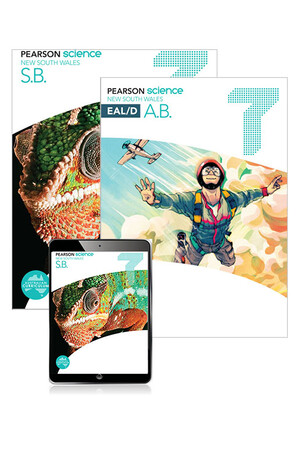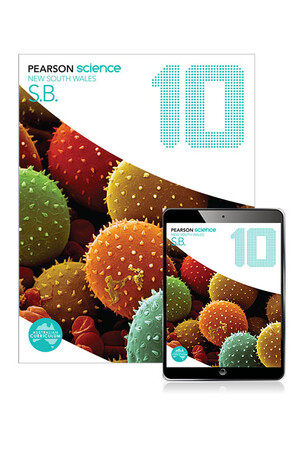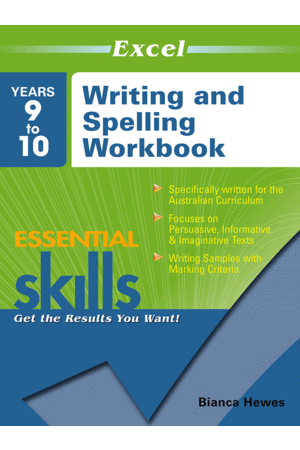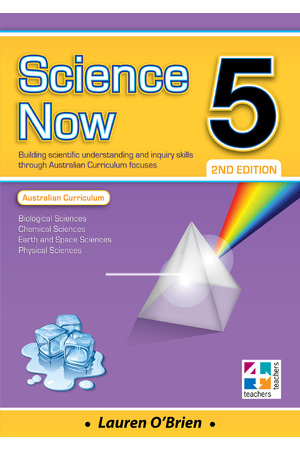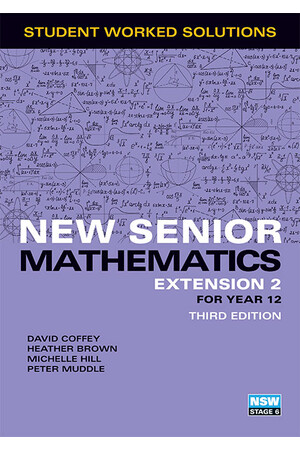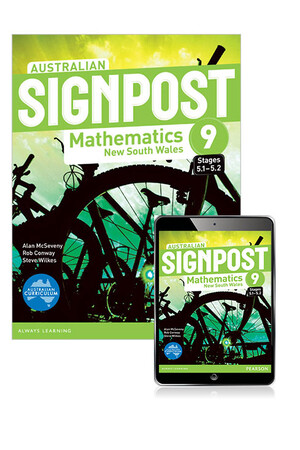Part of the series Jacaranda Core Science NSW.
View all products in this series
Jacaranda Core Science for the NSW Syllabus has been created to bring Science to life. This resource is designed to help you master scientific concepts, develop essential skills and explore real-world applications of science, all while staying perfectly aligned with the NSW Curriculum.
Data Science content, Depth Study guidance and Working Scientifically processes
Build key skills with Working Scientifically processes within the content, activities, questions and SkillBuilders. Plus dedicated Working Scientifically topics, including Depth Study guidance.
4-in-1 resource: digital, textbook, eWorkbook and eLogbook
Enjoy the flexibility of having your learning tools in multiple formats, including an eWorkbook for developing skills and an eLogbook for practical investigations.
GenAI personal tutor (jacTUTOR)
Receive personalised guidance from jacTUTOR, which helps you navigate challenging concepts and provides instant support.
Table of Contents
About this resource vi
Meet our author team xiv
Acknowledgements xvi
FOCUS AREA ENERGY
1 Using energy 1
1.1 Overview 2
1.2 Energy transfers and transformations 3
1.3 The conservation of energy 10
1.4 Efficiency in energy transfers and transformations 18
1.5 Using electrical energy 25
1.6 Electric circuits 31
1.7 Investigating energy efficiency 45
1.8 Review 55
2 Meeting our energy needs 59
2.1 Overview 60
2.2 Electricity generation 61
2.3 Renewable and non-renewable sources of energy 69
2.4 The case for change 80
2.5 Australia's pathway to energy efficiency 85
2.6 Review 103
FOCUS AREA DISEASE
3 Homeostasis 107
3.1 Overview 108
3.2 Homeostasis 110
3.3 Detecting changes 115
3.4 Responding to a stimulus 119
3.5 Feedback loops 124
3.6 The nervous system 133
3.7 The brain 139
3.8 The endocrine system 144
3.9 Review 149
4 Disease 155
4.1 Overview 156
4.2 Is it infectious? 157
4.3 Outbreaks 164
4.4 Non-infectious diseases 169
4.5 How diseases spread 173
4.6 The immune system 179
4.7 Vaccination 185
4.8 Reducing the incidence and spread of infectious disease 192
4.9 Medicinal plants 197
4.10 Australian advances in medicine 202
4.11 Review 207
FOCUS AREA MATERIALS
5 Sources and resources 211
5.1 Overview 212
5.2 Earth's resources 213
5.3 Using fossil fuels 219
5.4 Burning fossil fuels 226
5.5 Our metal resources 233
5.6 Mining and the environment 239
5.7 Aboriginal and Torres Strait Islander Peoples' use of resources 245
5.8 Review 249
6 Living in a material world 253
6.1 Overview 254
6.2 Atomic structure 256
6.3 Ionic compounds 263
6.4 Covalent compounds 270
6.5 Metals and metal structure 278
6.6 Polymers 287
6.7 Review 298
FOCUS AREA ENVIRONMENTAL SUSTAINABILITY
7 Environmental sustainability 303
7.1 Overview 304
7.2 Proposing solutions for sustainability 305
7.3 Climate and weather 309
7.4 Reducing greenhouse gas emissions 319
7.5 The rise in global temperatures 324
7.6 Climate change 328
7.7 Satellites 336
7.8 Causes of environmental pollution 340
7.9 Aboriginal and Torres Strait Islander Peoples' sustainability practices 343
7.10 Reduce, reuse and recycle 346
7.11 Review 358
FOCUS AREA GENETICS AND EVOLUTIONARY CHANGE
8 Genetics 361
8.1 Overview 362
8.2 Chromosomes, genes and DNA 364
8.3 The race for the double helix 372
8.4 Passing on information 376
8.5 Sexual reproduction 382
8.6 The function of DNA 388
8.7 Mutations 392
8.8 Peas and Punnett squares 399
8.9 Nature or nurture? 404
8.10 Genetic technologies 410
8.11 Genetic testing and bioethics 414
8.12 Review 426
9 Evolution 429
9.1 Overview 430
9.2 Life has changed 431
9.3 Developing the theory of evolution 437
9.4 Natural selection 444
9.5 Speciation 450
9.6 Evidence for evolution 456
9.7 Genetics and evolution 462
9.8 Review 470
FOCUS AREA REACTIONS
10 Chemical reactions 473
10.1 Overview 474
10.2 Describing chemical reactions 476
10.3 The language of chemical reactions 481
10.4 Neutralisation reactions 486
10.5 Features of reactions 498
10.6 Changing reaction rates 507
10.7 Review 518
11 Nuclear reactions 523
11.1 Overview 524
11.2 Radioactive isotopes 525
11.3 Radiation and radioactive decay 534
11.4 Describing nuclear reactions 541
11.5 Helpful radiation 546
11.6 Energy from the nucleus 551
11.7 Review 562
FOCUS AREA WAVES AND MOTION
12 Waves 567
12.1 Overview 568
12.2 Properties of waves 569
2.3 Sound and hearing 579
12.4 Electromagnetic waves 593
12.5 Light and vision 611
12.6 Review 633
13 Motion 637
13.1 Overview 638
13.2 Distance and displacement 640
13.3 Speed vs velocity 645
13.4 Acceleration and changes in velocity 58
13.5 Forces and motion 665
13.6 Newton's laws of motion 673
13.7 Motion in context 683
13.8 Review 689
FOCUS AREA DATA SCIENCE 2
14 Data science 693
14.1 Overview 694
14.2 Investigating claims and questions 696
14.3 Pseudoscience and data manipulation 701
14.4 Large datasets and statistical analysis 705
14.5 Using data to make predictions 715
14.6 Ethics in data science 717
14.7 Review 722
FOCUS AREA WORKING SCIENTIFICALLY
15 Working scientifically and depth study guidance 725
15.1 Overview 726
15.2 Observing 727
15.3 SkillBuilder - Measuring and reading scales 733
15.4 Questioning and predicting 736
15.5 SkillBuilder - Writing an aim and forming a hypothesis 738
15.6 Planning safe and ethical investigations 741
15.7 SkillBuilder - controlled, dependent and independent variables 746
15.8 Planning valid investigations 74815.9 Conducting investigations 753
15.10 Presenting data 757
15.11 SkillBuilder - Drawing scatter plots and line graphs 764
15.12 SkillBuilder - Creating a simple column or bar graph 766
15.13 SkillBuilder - Using a spreadsheet 770
15.14 Processing and analysing data 773
15.15 Using information to solve problems 781
15.16 Communicating 786
15.17 Depth study guidelines 791
15.18 Review 798
Periodic table of the elements 802
Glossary 804
Index 819
| ISBN | 9781394318056 |
| Publisher | Jacaranda |
| Product Type | Student Books, |
| Year Level | Year 9, Year 10, |
Be The First To Review This Product!
Help other Teacher Superstore users shop smarter by writing reviews for products you have purchased.









